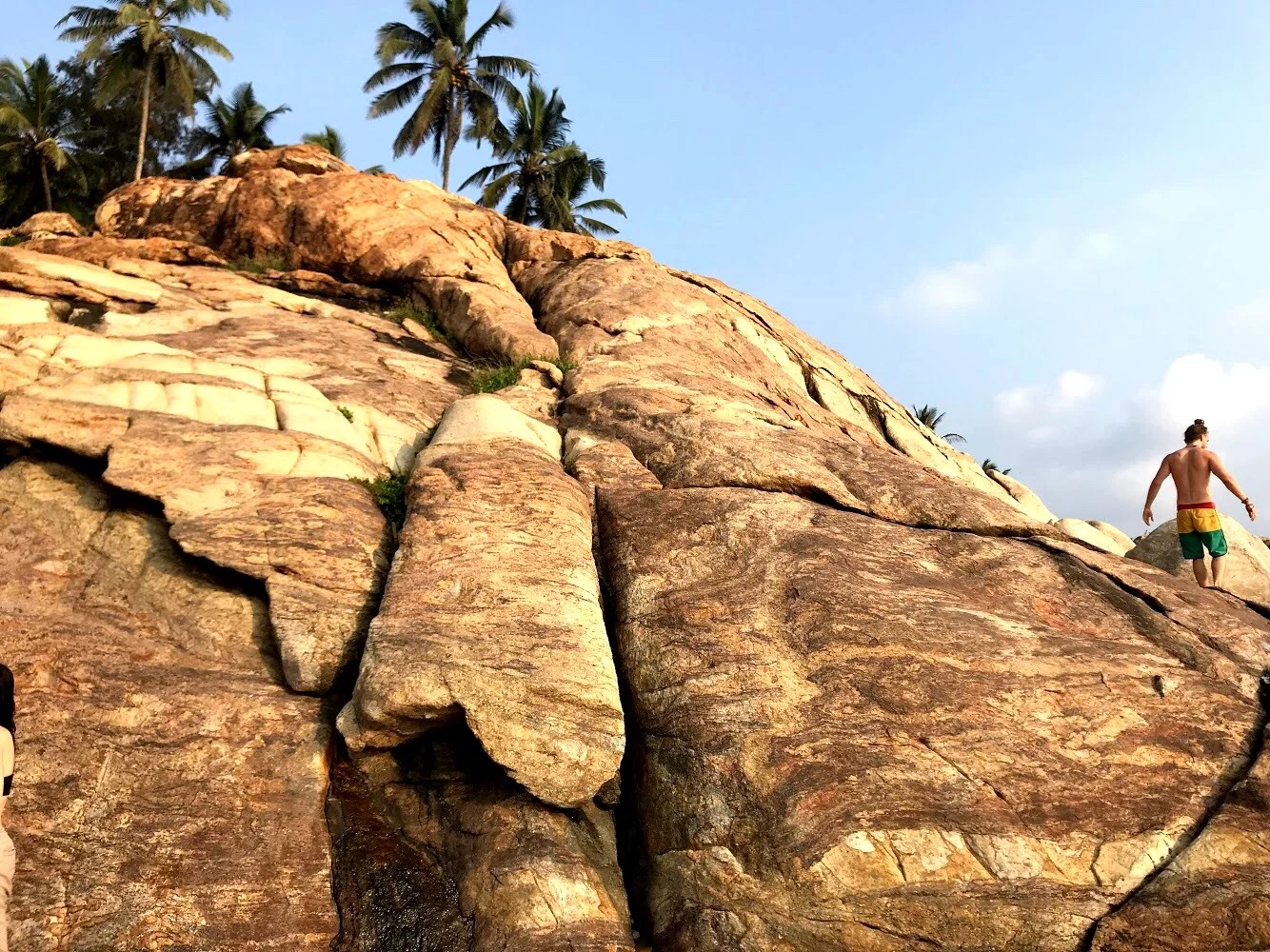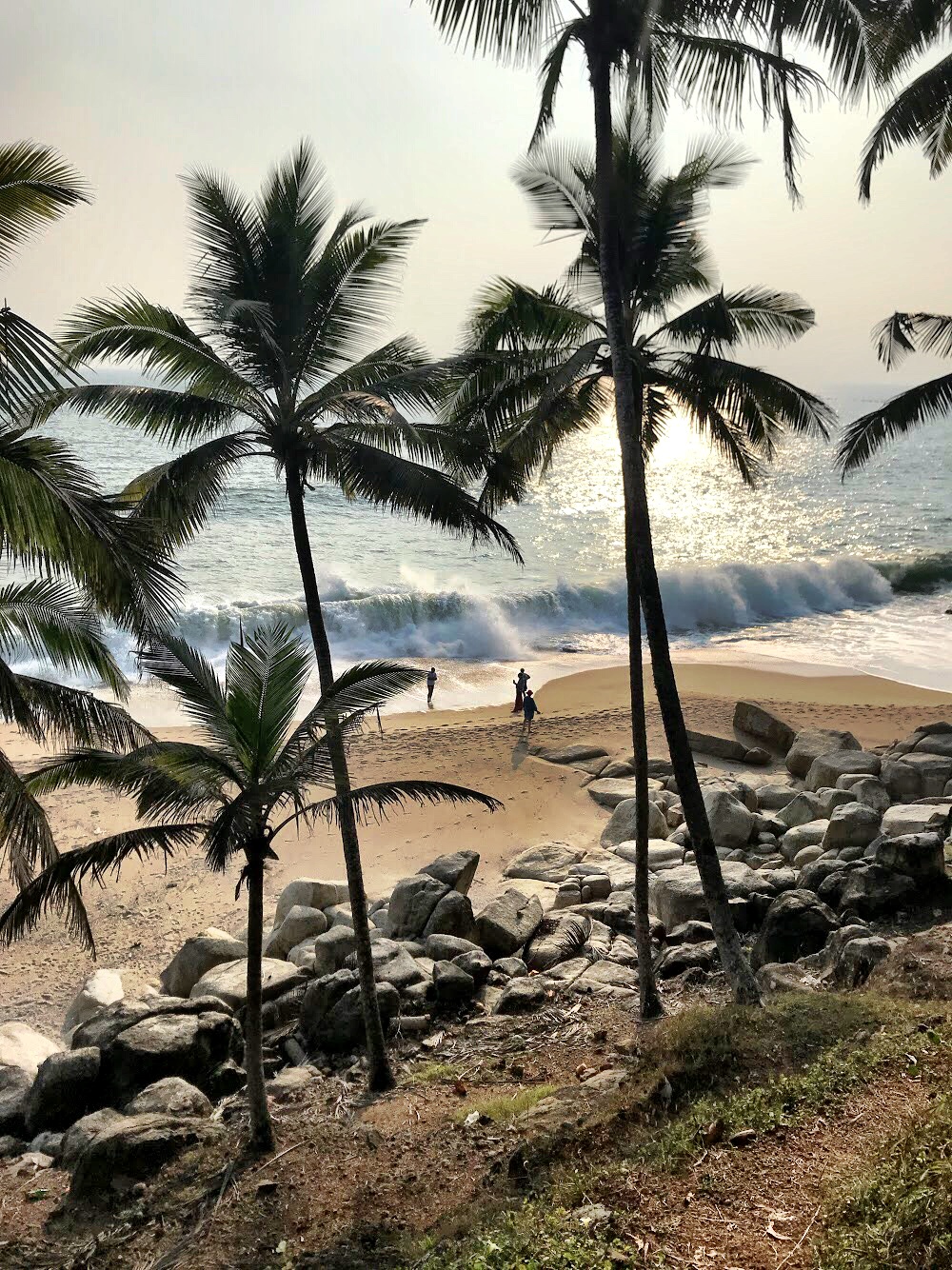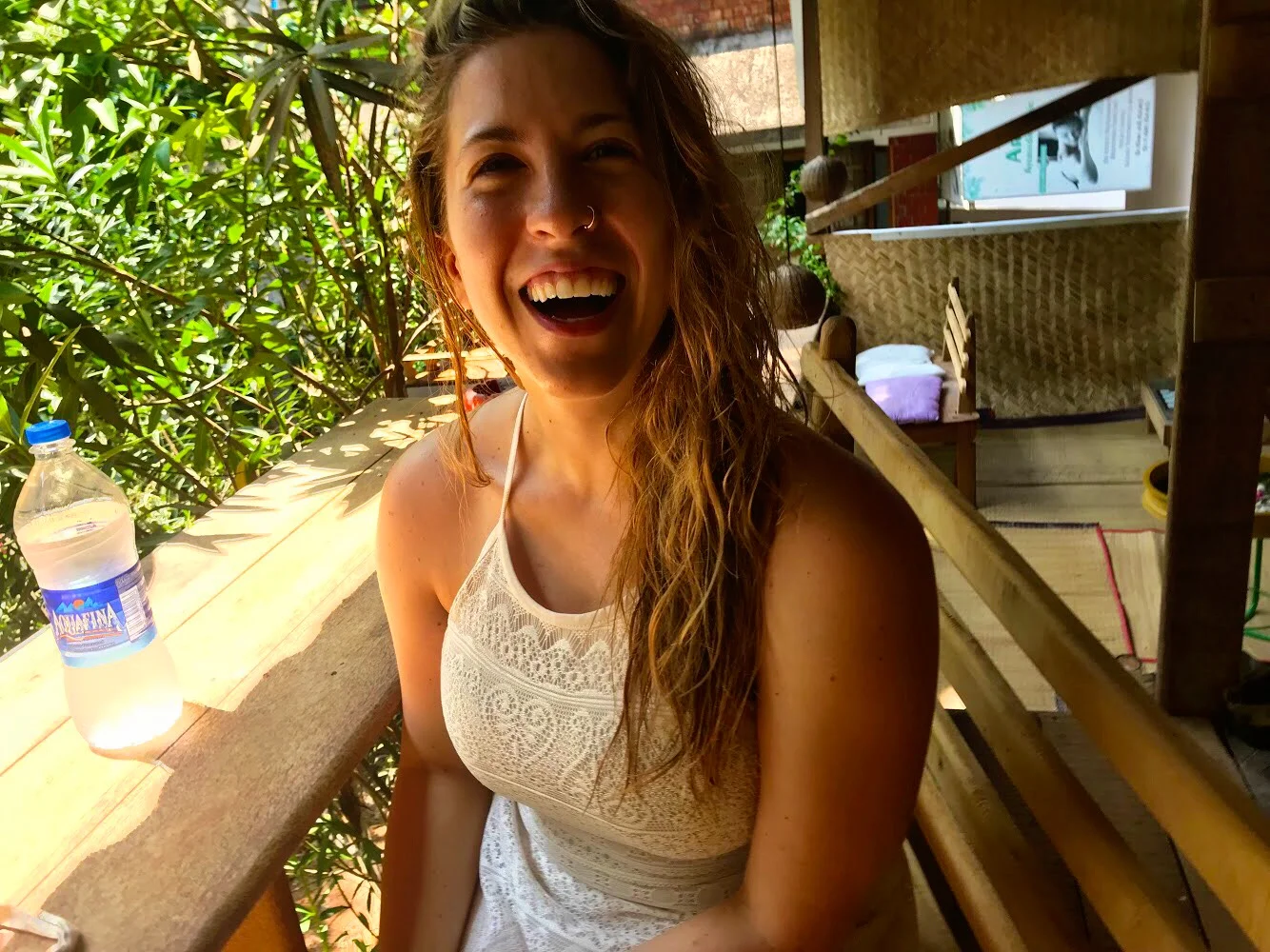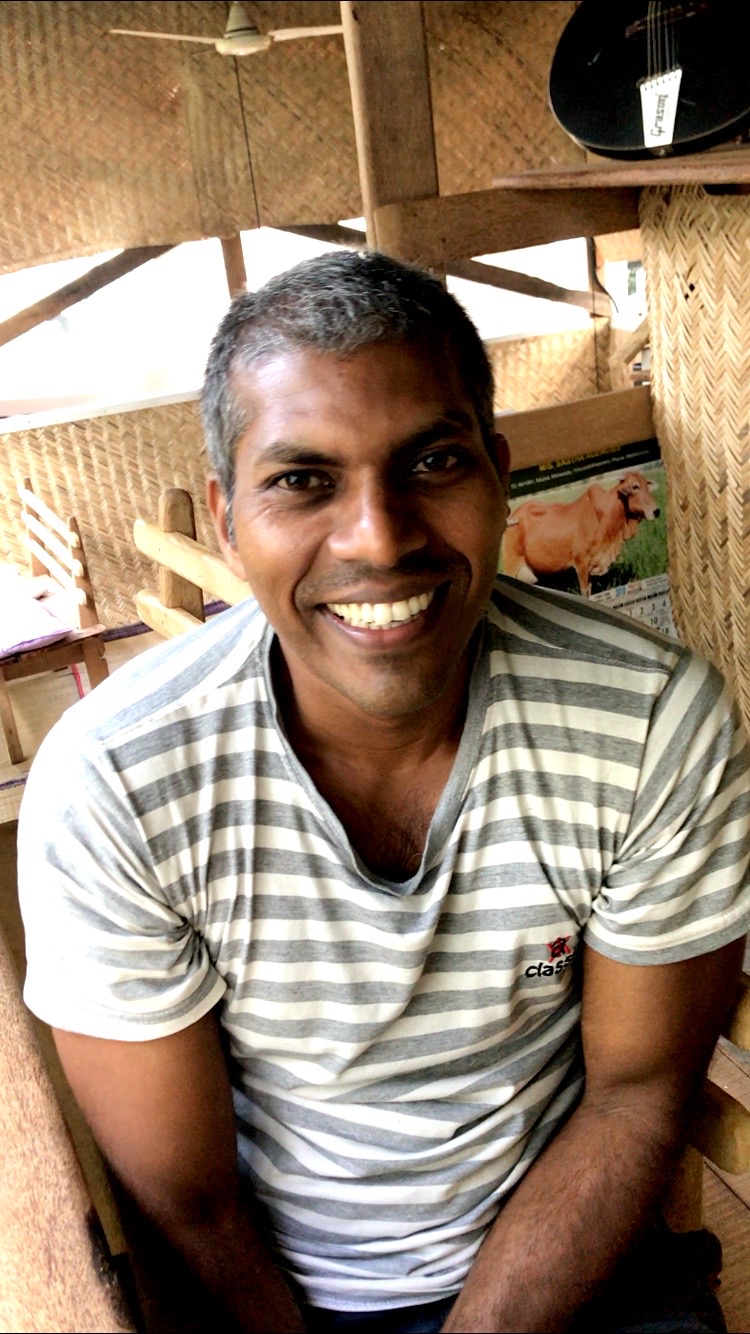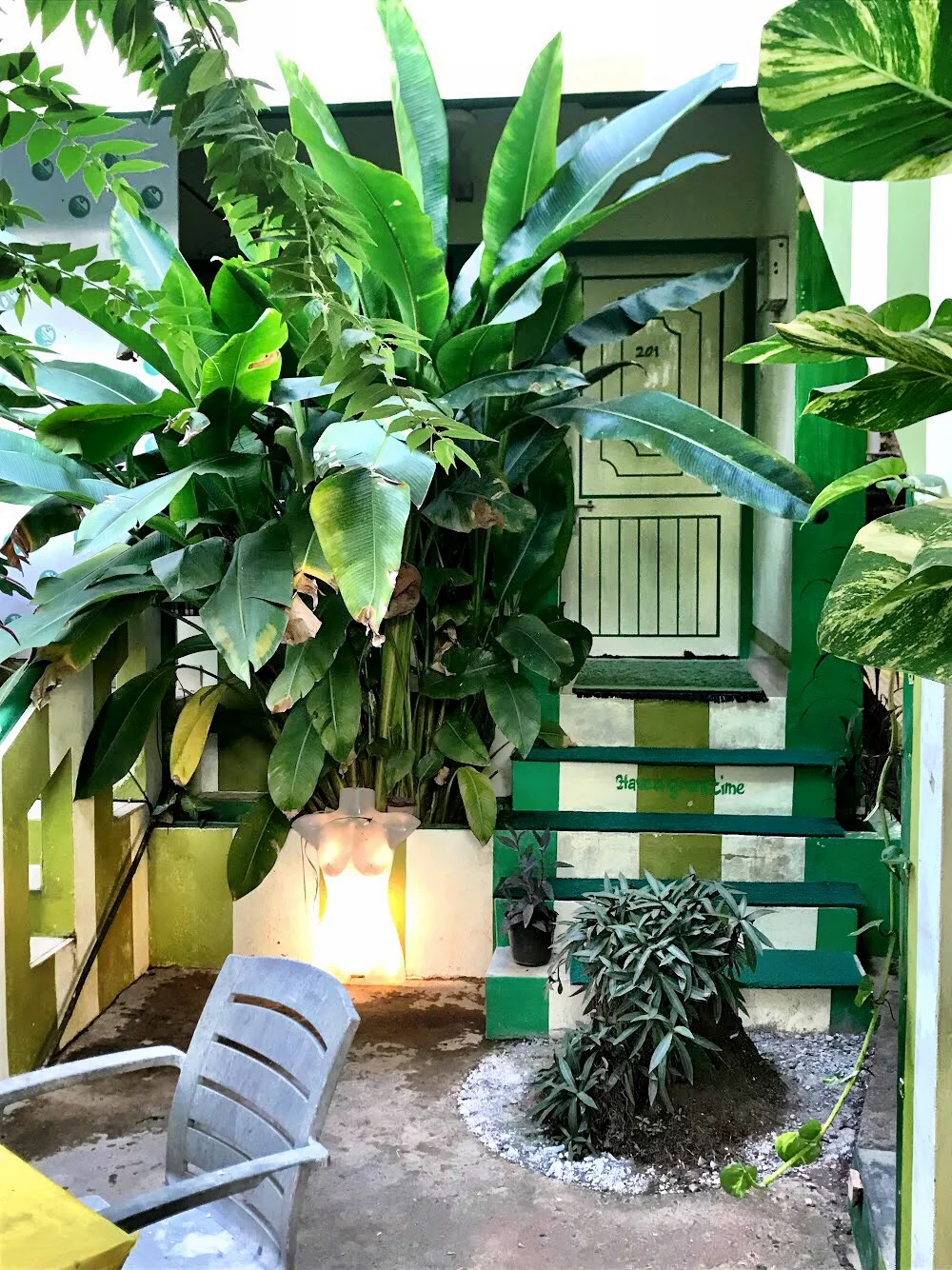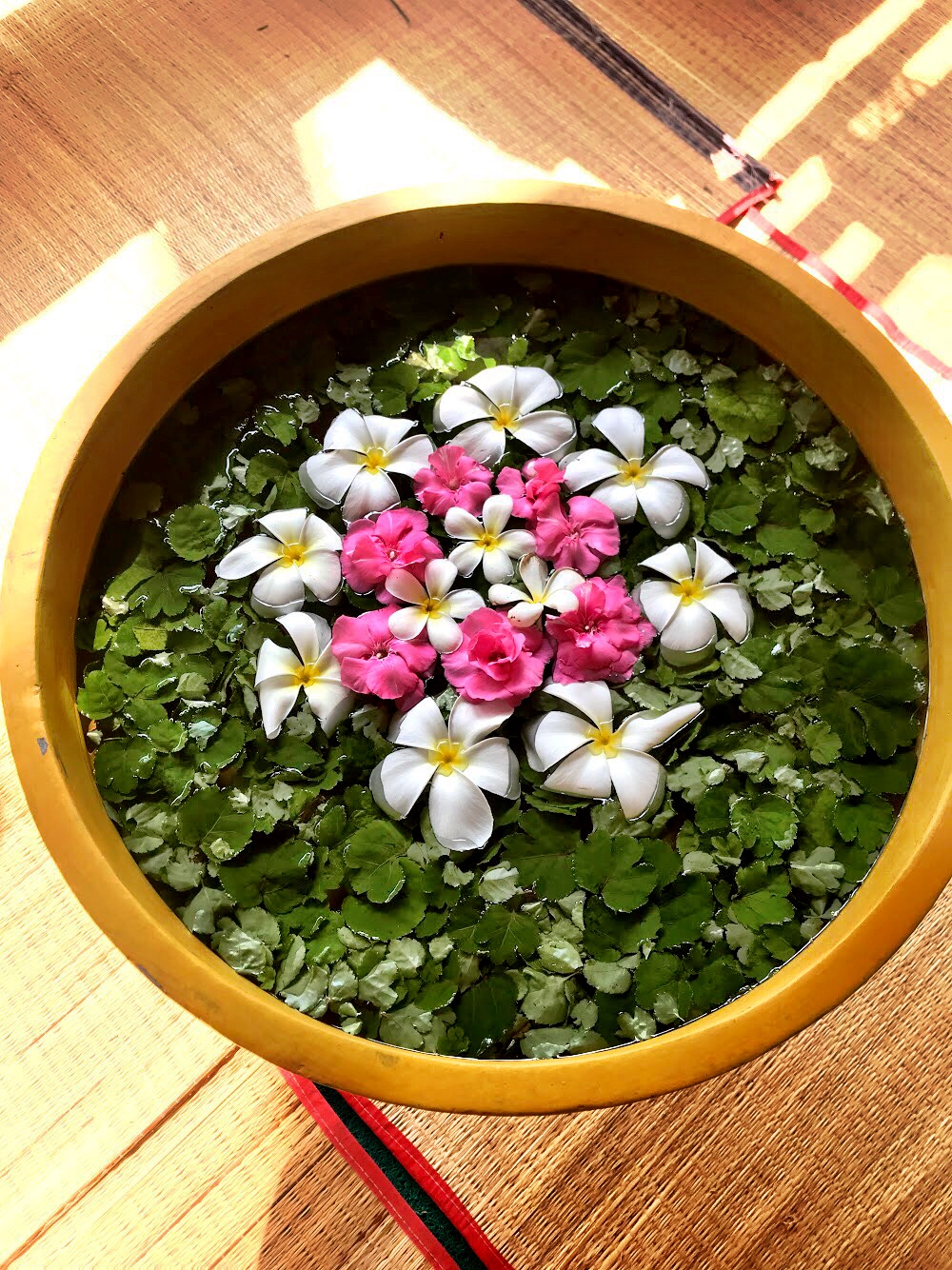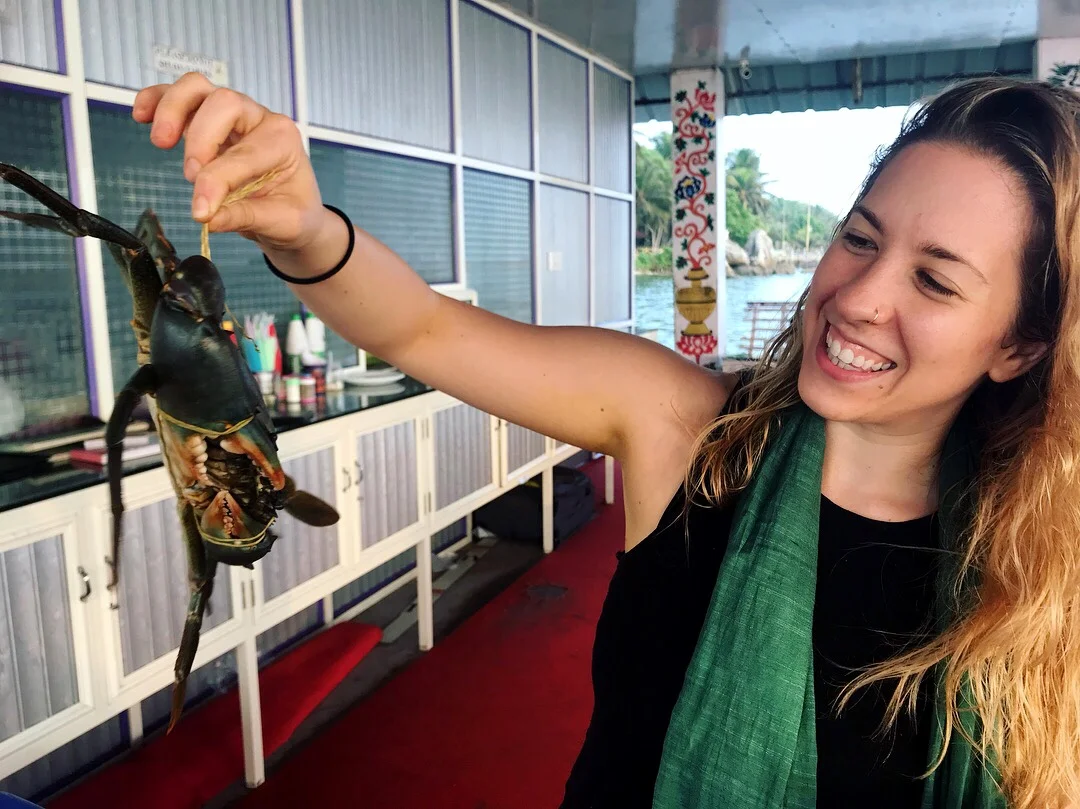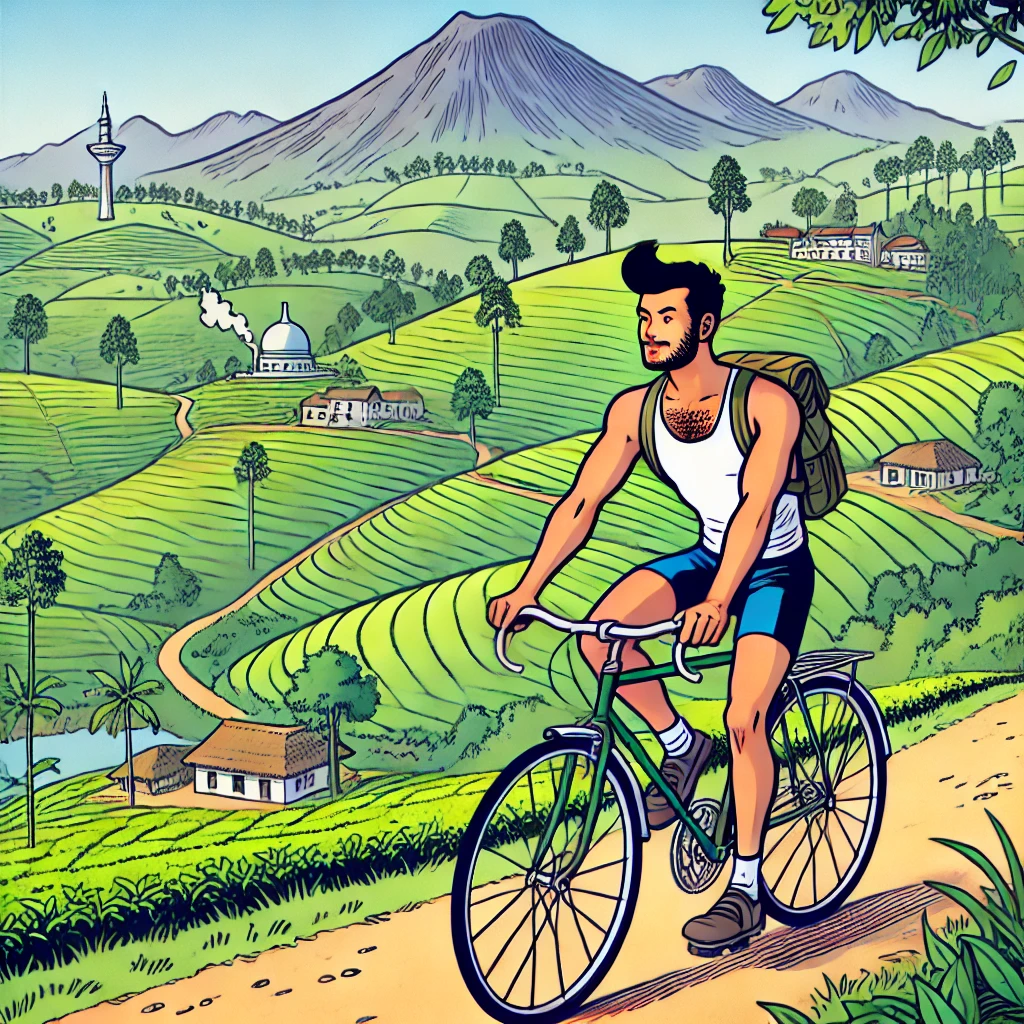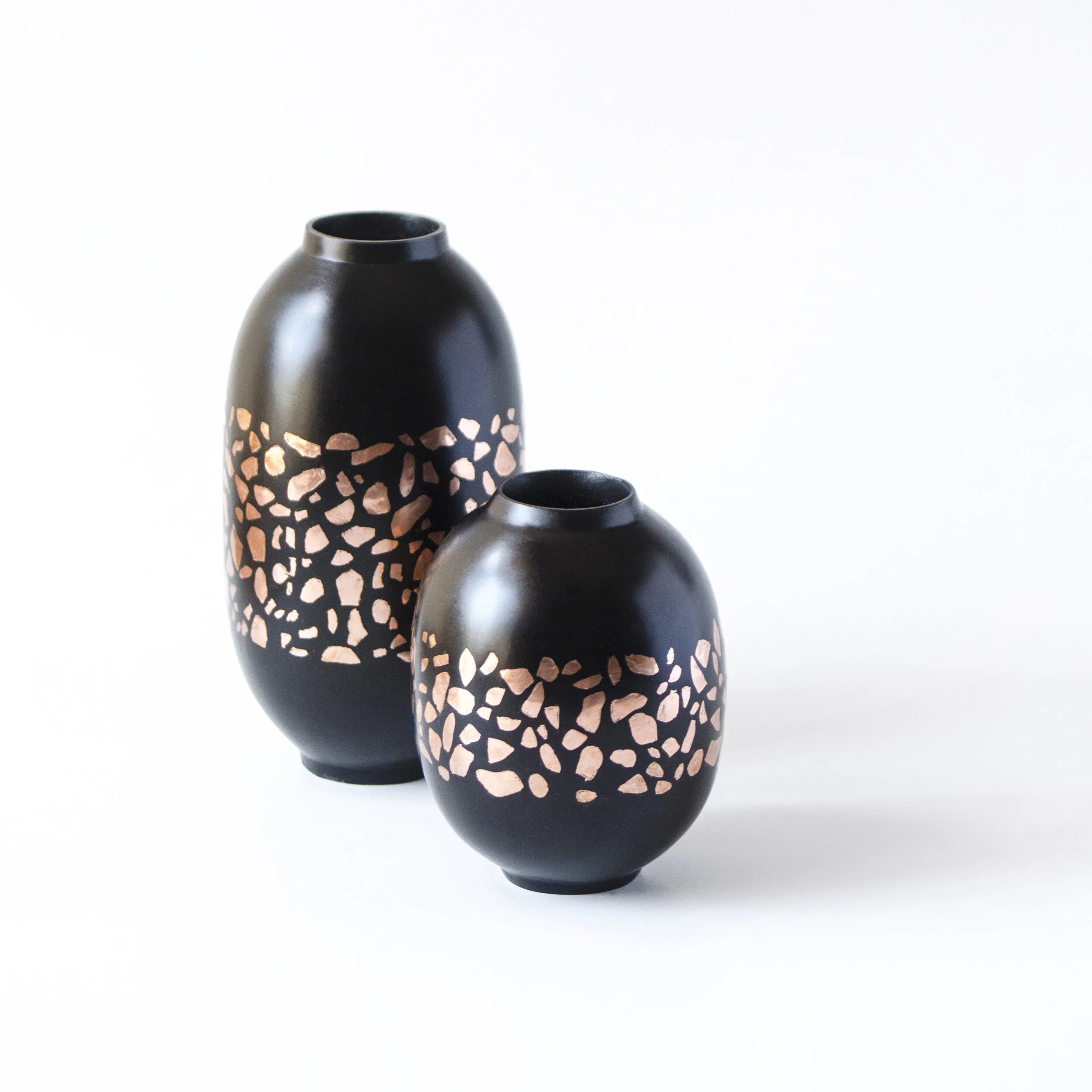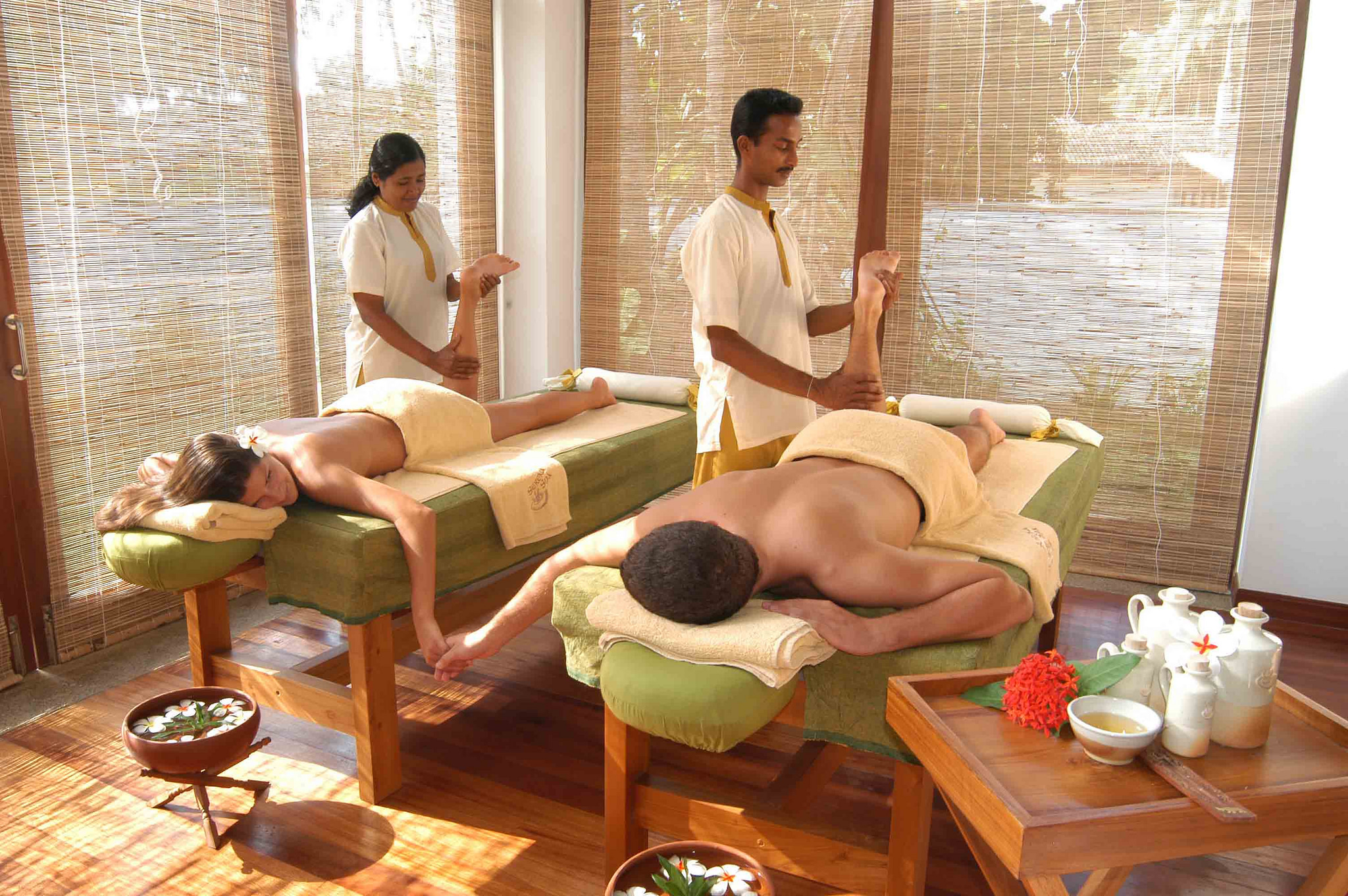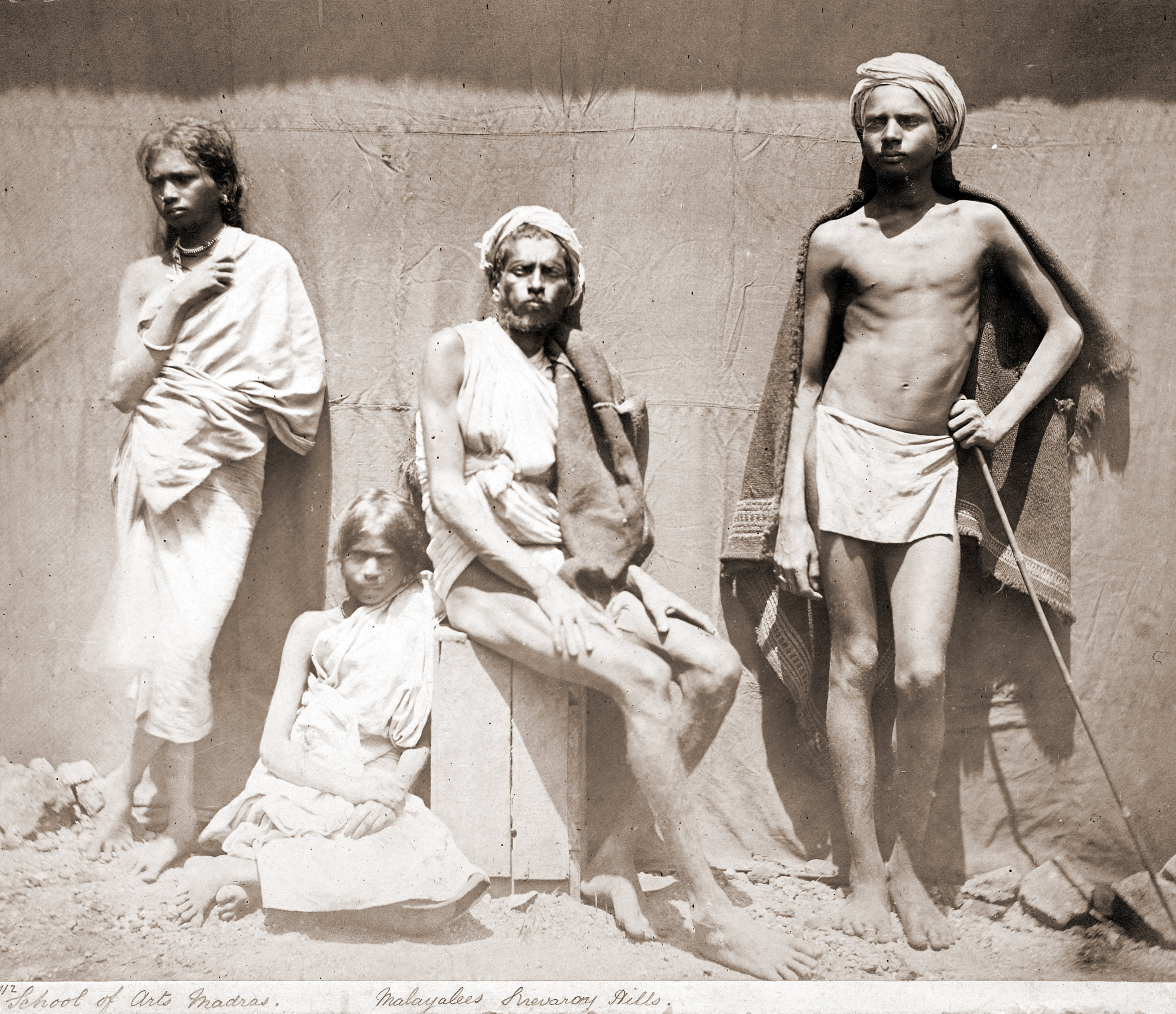This small beach town in South India isn’t your typical Indian experience — but it has its own intensity.
A stay in Kovalam isn’t your typical Indian experience. As a beach town, it’s much more laidback
Most people who travel to India don’t do so on a whim. But Kelly was at an impasse in her yoga practice and sought a spiritual kickstart. So when she saw that David Garrigues, a yoga instructor she admires, would be in a small beach town in the South of India, not five minutes had passed before she had booked her ticket.
Here Kelly shares her life-changing Indian spirit journey. –Wally
Kelly had a magical time on her solo adventure in Kovalam
“In Kovalam, all of the sidewalks have very high walls built up around them. If you are passing someone, and they don’t turn their body, you will touch them. That is how tight the space is.”
All sorts of interesting people flock to Kovalam for its beaches and focus on wellness
Tell us about Kovalam.
It’s a small town on the beach, but super touristy. Apparently, Kovalam used to be this hippie haven. I remember on my second day there, I was sitting in this restaurant overlooking the ocean and looking around and being like, What are all these random people doing here at the edge of the world? You have these old ladies from Russia who are decked out in all of this costume jewelry, and you have the beautiful, sleek yogis and the Brazilians who are there backpacking through India, and it just seemed like such a strange group of people who had gathered there.
Hints of the chaos of India slip into even this idyllic town
The other thing that struck me was the overwhelming sense of anonymity. This was a place I could navigate as my true self versus the self that I have cultivated here with my friends and work.
Most of the locals spoke English, which I didn’t expect. I’ve heard a lot about India, but I think the experience of this town was a lot different. Though I will say there was a certain amount of chaos — leaving the airport in Trivandrum and getting to Kovalam was insane: people on rickshaws and bikes weaving in and out of traffic.
It seemed like everything was in a different stage of being constructed or being torn down. And there were people burning garbage, fires lining the street, and all this new construction, and in front of that, there’d be old men in loincloths selling fruit. It was this bizarre mix of new construction and old tradition.
Johny’s Beach House is like staying in a treehouse
Where did you stay in Kovalam?
I stayed at a place called Johny’s Beach House. It was like stepping into a jungle. It’s only four rooms. But he has this huge garden — there are literally monkeys that will climb through the trees there.
Johny himself — his warm heart is why his B&B is a top-rated place to stay in Kovalam
The garden at Johny’s is filled with lush greenery — and the occasional monkey
Johny built Johny’s Beach House, this hilarious, quirky treehouse, four years ago and he’s been running it ever since. He comes from this really small village and worked his way up in the tourism industry in Kovalam and now he’s the highest-rated place to stay. Which all of the other hotels are really baffled by because they don’t understand why this tiny little treehouse four-bedroom B&B is the top-rated place. But the thing is, when people stay there, they aren’t rating the B&B itself — they’re rating Johny, because he is such a personality, with this quirky sense of humor and is super engaging and really creative. That is his space, and it’s completely a representation of him.
Breakfast at Johny’s
Every morning Johny would make me this porridge with bananas and cardamom and different nuts when I’d get back from yoga. And I’d eat it on my balcony and read my yoga books. It was beautiful.
Did you ever feel unsafe in Kovalam?
There was only one time. I was coming home late. In Kovalam, the way that the town is structured — all of the sidewalks have very high walls built up around them. I bet they’re 7-foot walls. If you are passing someone, and they don’t turn their body, you will touch them. That is how tight the space is.
That was the challenge: getting anywhere. Google Maps doesn’t have all those tiny twists and turns, so I would literally allot 40 minutes to get to a place because I was like a mouse in the middle of a maze — even if it was a 5-minute walk away. Because the sidewalks were built around the homes, there would be dead ends; the sidewalk would turn into a dirt path that would go into somebody’s house. I got lost a bunch of times and one time had to be rescued.
It’s actually sad. Johnny told me that as the tourism industry took off in Kovalam, a lot of these hotels and restaurants and visitor homes built up the walls to prevent locals from entering their properties. And so in way, it was this discriminatory measure, to appeal more to the tourists.
It was a problem if you were coming toward a group of men and they didn’t make any sign of moving. That happened a few times, and it’s very intentional — people do that on purpose with women.
A strange encounter in the walled labyrinthine sidewalks in Kovalam
There was one time I was coming home late. There was a little dog I made friends with while I was there and it hung out outside of Johny’s Beach House and it would follow me around everywhere. I would go find it in the morning and he would follow me to the market or the beach. So he was my little buddy for two weeks.
This little fella followed Kelly everywhere she went in Kovalam and acted as her guard dog
Did you name the doggie?
He was just little Sweeters. So this one night I was walking home and there was a drunk man who I think was maybe following me. I don’t know exactly what happened, but I was starting to get that danger feeling, and a few moments later, I heard the dog start growling. Sweeters was snapping at the man. So I ran to the gate, opened it really fast and shut it.
What was it like being in such a small town?
Everyone watched your every move. The locals would ask, “Where are you from? Where are you staying? What are you doing?” And then they’d track me. They’d say, “Oh, I saw that you were at the blah-blah-blah the other day.” Or I’d meet somebody at a restaurant and they’d say, “You’re studying with David.” Everyone knew everyone’s business, which was really crazy.
People would ask me, “Are you married? Do you have a boyfriend?” It was very intrusive.
You’ll see offering bowls, like this one at Johny’s Beach House, all over Kerala
What was the most interesting Indian custom you encountered?
I really like the head bob. I had to ask Johny, “What does this mean?” And he was like, “Sometimes it means yes. Sometimes it means no. Sometimes it means they didn’t understand what you said.” And I was like, “Oh, that clears it up. Thanks.”
But I also found myself kind of doing it.
Because Johny and I became friends, I was able to do a lot of things I wouldn’t have been able to as a tourist. I spent a lot of time on the back of Johny’s motorbike, clinging on for dear life, struggling to breathe through the pollution. But it was like seeing this area through the eyes of a local.
We went to this really bizarre restaurant in Trivandrum. It seemed like this restaurant was a converted version of a twisty parking garage ramp. There are all these booths along the far wall as the restaurant spirals upward. I guess it’s the place to go in Trivandrum if you want coffee or dosa, which is like a crepe.
Kelly likes to play with her food, as seen on this houseboat restaurant
What was the food like in Kerala?
I’m obsessed with food. But surprisingly, I was underwhelmed.
The yoga studio that I go to in Chicago, the owner was coincidentally in Kovalam at the same time, doing a completely separate retreat. So I spent a lot of time with his people, and he had a house and has been going there for 20 years. He knows everything about Kovalam. And he had a neighbor friend, this woman, who made all of this food for us for our final meal. It was thali [the Indian version of tapas] served on a banana leaf — it was definitely the best meal that I had.
Thali, presented on this banana leaf, consists of small bites of different dishes, much like tapas
“Kelly: What does the head bob mean?
Johny: Sometimes it means yes. Sometimes it means no. Sometimes it means they didn’t understand what you said.
Kelly: Oh, that clears it up. Thanks.”
